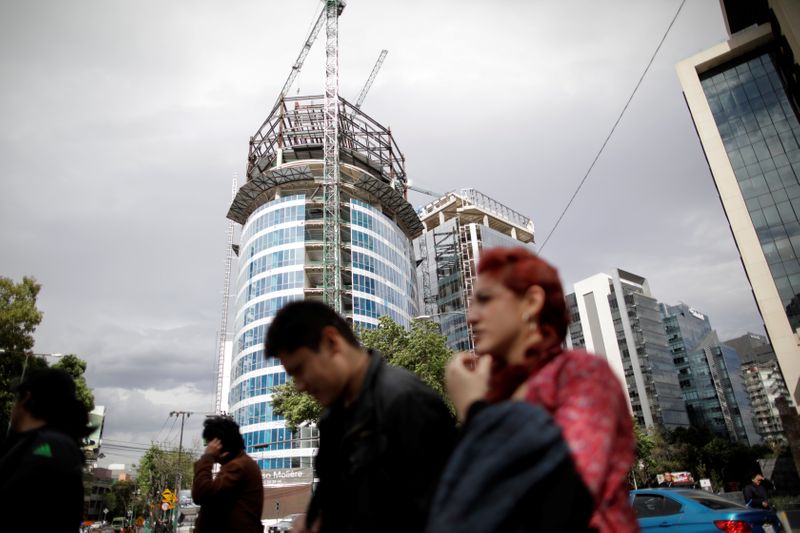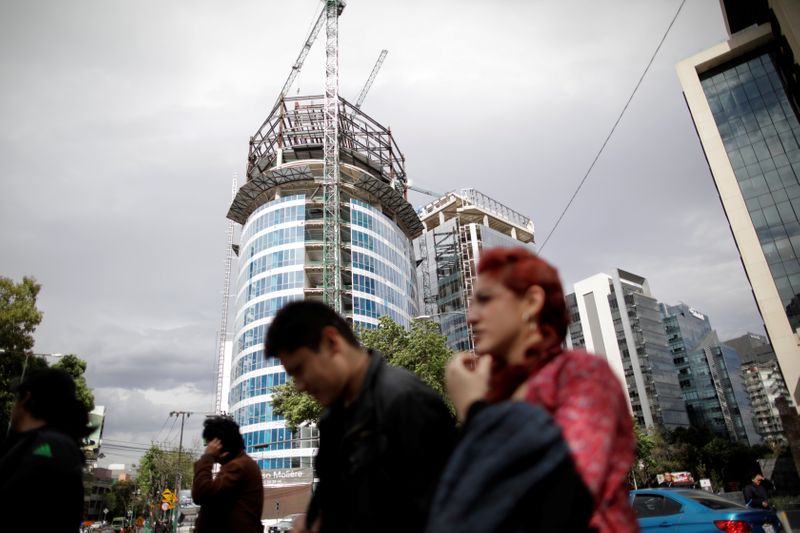By Abraham Gonzalez
MEXICO CITY (Reuters) -Mexico's economy bounced back to annual growth in the second quarter, boosted by services and manufacturing for export to the United States, its top trade partner, a preliminary estimate from the national statistics agency showed on Friday.
Compared with the same quarter a year earlier, when the formal and informal economy was largely shut down by coronavirus pandemic restrictions, growth was 19.7%, the statistics agency said.
That was the first year-on-year quarterly growth since before the pandemic, and close to the number forecast in a Reuters survey of 14 analysts. [L1N2P21IX]
Hammered by restrictions brought about by the pandemic, Latin America's second-largest economy shrank 8.5% in 2020, its worst performance since 1932.
The current recovery has been led by demand from the United States for the cars and electronics made in Mexican factories, while remittances sent by migrants north of the border have helped domestic consumers.
However, Mexico's economy is still 3.6 percentage points below its peak in the July-September period of 2019, noted Gabriel Casillas, an economist at Mexican bank Banorte. The economy had contracted for half a year even before the coronavirus appeared in Mexico.
Quarter-on-quarter, seasonally adjusted growth was 1.5%, marking the fourth consecutive quarter of economic expansion. It was lower than the 1.7% forecast by analysts.
Goldman Sachs (NYSE:GS) economist Alberto Ramos said the quarterly expansion was crimped by supply chain disruptions and shortages of parts for key industries. A global crunch for computer chips has slowed factory output in Mexico. Ramos flagged risks ahead.
"We expect real GDP growth to reach 6.0% in 2021, but the recent deterioration of the COVID backdrop, high inflation and rising rates could slow down the envisaged recovery," Ramos said in a client note.

Secondary activities, which include factories, rebounded by 28.2% in the April-June period, while tertiary activities, including trade and financial services, were up 17.1%, the data showed.
Quarter-on-quarter, secondary activities rose a modest 0.4%, reflecting the supply problems, while tertiary activities were up 2.1%.
